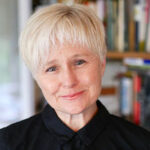Storytelling and the power of new thought
A long time ago, I spent a day on a replica of HMS Endeavour on Sydney Harbour. It was an uncanny experience. This ship, a reconstruction, seemed an almost inconceivably small thing to have delivered so much change and disruption to the Southern Hemisphere. The knowledge that I was part of the settlement that had resulted – over time – from its visit had to sit alongside the havoc that settlement had brought. At a level of simple geography, it was also uncanny: Sydney Harbour is a body of water the original ship never entered, embraced by shorelines its sailors never saw. This voyage wasn’t re-creating anything that had ever actually happened.
I carry two sensations from that day, more than fifteen years ago now. The first is the smallness of the ship’s two finest cabins assigned to Lieutenant James Cook, its captain, and Joseph Banks, the rich young man who craved – and got – a ‘grand tour’ that would circumnavigate the globe. Each had just 2.4 square metres of floor space, with ceilings 1.7 metres high. Both men, over 1.8 metres tall (or six foot in their measure), must have had to dip their heads and duck. The second is the skewed view through the windows, their uneven glass rippling the scenes outside into distorted versions of themselves. Changing the world waterborne visitors saw through a thick and alien lens.
Listen to Editor Dr Ashley Hay read ‘Beyond the frontier’.
If there’s nothing new in saying that Endeavour and its narrative was only ever one small part of the unfolding story of this continent, its primacy – after more than a quarter of a millennia – is still surprising. It was 250 years after the Endeavour’s crew made landfall in the place they called Botany Bay before the message called out from the shore by the Dharawal residents of Gamay was correctly translated. Not ‘go away’, as Cook presumed and recorded, but ‘you’re all dead’. ‘When our old people saw the Endeavour coming through, they actually thought it was a low-lying cloud because all they could see was whiteness,’ Ray Ingrey, the deputy Chair of the La Perouse Local Aboriginal Land Council, told the ABC on 29 April 2020, the sestercentennial anniversary of Cook’s landing. ‘In Dharawal culture, that low-lying cloud means the spirits of the dead have returned to their Country and so they saw almost ghosts. So when the two men opposed the landing, they were protecting the Country in a spiritual way from ghosts.’ As Dharawal Elders collaborated with museums, libraries and other archival repositories to re-evaluate European records, Ingrey was hopeful it would be possible to ‘give the broader Australian public a more authentic story and a story that makes sense’.
Read the remainder of Beyond the frontier at Griffith Review.
Author

Dr Ashley Hay is a former literary editor of The Bulletin, and a prize-winning author who has published three novels and four books of narrative non-fiction.
Her work has won several awards, including the 2013 Colin Roderick Prize and the People’s Choice Award in the 2014 NSW Premier’s Prize. She has also been longlisted for the Miles Franklin and the International IMPAC Dublin Literary Award, and shortlisted for prizes including the Commonwealth Writers’ Prize and the Kibble. In 2014, she edited the anthology Best Australian Science Writing.
She is the editor of Griffith Review.
Share on facebook
Share
Share on twitter
Share
Share on linkedin
Share
